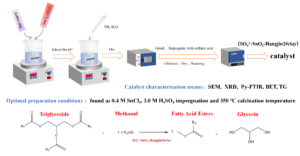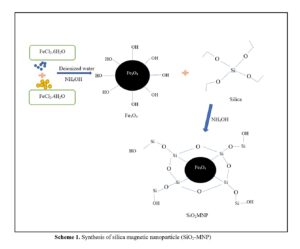Volume 18 Issue 3
Latest articles
- Researchpp 6169-6182Lee, M., Kang, E.-C., Lee, S.-M., and Yoon, S.-M. (2023). “Mechanical properties of structural particleboard and termite and decay resistance,” BioResources 18(3), 6169-6182.AbstractArticlePDF
The mechanical properties and termite and decay resistance performance of wood-based panel used in wooden houses were evaluated. The physical and mechanical properties, along with the resistance levels, of commonly used wood-based panels, including oriented strand board, structural particleboard, and particleboard for use in interior, were compared. The structural particleboard complied with the physical, mechanical, and formaldehyde emission standards of the International Organization for Standardization and Japanese Industrial Standard, surpassing the requirements for oriented strand board. The structural particleboard exhibited excellent water resistance and a consistent performance. Decay tests classified the particleboard and structural particleboard as “Resistant,” with mass losses of 7.82 to 12.72% (white rot) and 14.69 to 16.55% (brown rot). Pine (Pinus densiflora) and oriented strand board exhibited no decay resistance, with mass losses exceeding 45%. The particleboard and structural particleboard demonstrated superior termite resistance, resulting in 100% termite mortality in three days without chemical treatment. The structural particleboard exhibited excellent water, decay, and termite resistance, which can be an advantage in wooden-house construction in terms of maintenance.
- Researchpp 6183-6193Erdem, R. (2023). “Change of Cr, Co, and V concentrations in forest trees by species, organ, and soil depth,” BioResources 18(3), 6183-6193.AbstractArticlePDF
Heavy metal pollution is one of the most important environmental problems threatening living organisms and environmental health. Thus, there is much research interest in monitoring and reducing heavy metal pollution. Plants’ potential to accumulate heavy metals in various organs differs greatly. Therefore, it is necessary to determine the most suitable species and organs first and acquire knowledge of the subjects such as the transfer of heavy metals within plants and their particular intake into plants. This study investigated Cr, Co, and V, which are among the most important and dangerous heavy metals, and are listed in the primary pollutant list of the Agency for Toxic Substances and Disease Registry. Their concentrations were studied at different depths of soils where Pinus nigra, Pinus sylvestris, Fagus orientalis, and Abies nordmanniana subsp. bornmüelleriana species are grown, in the leaves, cones, wood, bark, and roots. The results showed that the intake of these elements into plant bodies generally occurs through the soil. Additionally, the highest concentrations in both leaves and roots were generally obtained in Fagus orientalis and Abies nordmanniana subsp. bornmüelleriana species. It can be stated that those species are the most suitable species to monitor and reduce heavy metal pollution.
- Researchpp 6194-6203Ding, L., Ni, J., Hao, Y., Hai, B., and Ao, T. (2023). “Preparation, characterization, and catalytic properties of SO42-/SnO2-Hangjin2#Clay solid superacid catalyst,” BioResources 18(3), 6194-6203.AbstractArticlePDF

A new sulfate oxide solid acid catalyst SO42-/SnO2-Hangjin2# clay was compounded with Hangjin2#clay, activated by sulfuric acid, as a carrier. In the catalysis of Xanthoceras sorbifolium Bunge, using the yield of oil and methanol synthesis of biodiesel as an index, the effect of SO42-/SnO2-Hangjin2#clay and the preparation conditions on the activity of solid acid were investigated. The variables included in the optimization process were concentration of Sn, impregnation sulfuric acid concentration, and calcination temperature. The optimal conditions were found as 0.4 M SnCl4, 3.0 M H2SO4 impregnation, and 350 °C calcination temperature. The catalyst was examined by scanning electron microscope, X-ray diffraction meter, Fourier transform infrared spectroscopy, surface area, and thermal weight analysis. The results showed that the introduction of Hangjin2#clay in the SO42–-SnO2 solid acid catalyst improves its catalytic activity.
- Researchpp 6204-6220Nik Wee, N. N. A., Md Saleh, N., Devi, T., Samsuri, A., and Mat Salleh, M. Z. (2023). “Synthesis of silica from rice husk as coating material on magnetic nanoparticle for efficient adsorption of phenol from water samples,” BioResources 18(3), 6204-6220.AbstractArticlePDF

Silica (SiO2) from rice husk was coated with magnetic nanoparticles (MNPs) as an adsorbent to adsorb phenol from river water. The structure of SiO2 and SiO2-MNPs were characterized by Fourier transform infrared spectroscopy (FTIR) and X-ray diffraction (XRD). Field emission scanning electron microscopy (FESEM) showed a rod shape, with a rough surface area in the range of 2 to 3 µm. Transmission electron microscopy (TEM) and energy dispersive x-ray spectroscopy (EDX) were used to examine the resulting spherical shape of the synthesized SiO2-MNP. The results showed a range of 1.3 to 1.5 nm for SiO2 and 4.2 to 6.4 nm for SiO2-MNP. Vibrating-sample magnetometer (VSM) showed an Fe value of 45.1% in SiO2-MNP (VSM); for MNP, SiO2, SiO2-MNP 104.12, 4.72, and 8.01 emu/g, respectively. Response surface methodology (RSM) was used to study the parameters and responses to obtain an optimized condition in SiO2-MNPs usage. The optimized parameters were extraction time selected at 5 min, pH 8, 8 mL acetonitrile as solvent and 15 min as sonication time. The application of SiO2-MNPs was applied to real water samples, with recovery of 84% of phenol. Thus, the synthesized adsorbent, SiO2-MNPs, was developed successfully for phenol removal from water samples.
- Researchpp 6221-6235Kopaczyk, J., Jelonek, T., and Szwed, T. (2023). “The impact of resin harvest history on properties of Scots pine wood tissue,” BioResources 18(3), 6221-6235.AbstractArticlePDF
This study was conducted in Central Europe (Poland) in pine forests that were subjected to the process of resin harvesting in the 1970s. Forty trees were designated for the study, which had one or two resin blazes. The objectives of the experiment were to determine the effect of resin tapping on the changes in annual growth, wood density, and mechanical strength of wood in the damaged trees. Resin tapping affected the development dynamics, especially in trees with a single resin blaze. In addition, bark cutting affected wood density over the cross-section. However, no significant variation was found in terms of the mechanical properties of wood, which may support the theory of adaptive tree growth and optimization of tree’s structure to its functions.
- Researchpp 6336-6347Korpela, A., Tanaka, A., and Asikainen, J. (2023). “Effect of chemical crosslinking on the biodegradation rate of kraft paper,” BioResources 18(3), 6336-6347.AbstractArticlePDF
Wood-based paper fibers are inherently biodegradable. In contact with moist soil and in compost, papermaking fibers are readily broken down by soil microbes. Resistance to biodegradation is needed, as paper is used for special applications such as mulching in agriculture and forestry, the coating of construction materials, and for packing and wrapping under conditions where packaging materials may be exposed to contact with moist soil or other type microbial active contamination. A preceding study showed that paper chemical crosslinking with glyoxal, citric acid (CA), or methylated 1,3-dimethylol-4,5-dihydroxyethylene urea (mDMDHEU) results in substantially improved paper wet strength and lower paper water absorbency. The present study examined the efficiency of chemical crosslinking treatments with CA and with mDMDHEU to decrease the biodegradation rate of laboratory paper sheets and a sack paper, both made of kraft fibers. The biodegradation was examined using a 48-h enzymatic degradation test and a 2-month soil burial test. The results indicate that chemical crosslinking is an effective non-biocidal method for making sulphate kraft paper more resistant to biodegradation. In some end-uses, improved resistance to biodegradation, along with improved paper wet performance, can enhance paper performance comparable to plastic films.
- Researchpp 6348-6363Wu, Y.-H., Chao, W.-C., Yang, T.-H., Chang, F.-C., and Yang, T.-H. (2023). “Surface, physicomechanical, and chemical properties of wood/polypropylene composites from various formulations after accelerated weathering,” BioResources 18(3), 6348-6363.AbstractArticlePDF
Accelerated weathering experiments were used to examine the durability and changes in various attributes of WPCs manufactured with the same wood powder size but varying polypropylene-to-wood ratios. Results from the accelerated weathering test revealed color changes, and each attribute generally declined with longer weathering times. In terms of mechanical qualities, the preservation of strength and stiffness increased with increasing plastic content. More wood flour led to higher moisture uptake in frequent humidity fluctuations and high temperatures. It also caused swelling as wells as subsequent cracks. Such surface damage could result in faster weathering and worse mechanical qualities. Additionally, the carbonyl index and the functional groups on the surface of WPCs underwent significant changes with increased weathering time.
- Researchpp 6364-6383Liu, X., Wu, Y., Zhao, W., Wu, Z., Han, H., Xie, X., Yilmaz, M., and Ko, T.-H. (2023). “Adsorption of malachite green from aqueous phase by tea stalk powder: Parameters, kinetic, isothermal, and thermodynamic studies,” BioResources 18(3), 6364-6383.AbstractArticlePDF

Decolorization of malachite green (MG) from the aqueous phase was investigated using tea stalk powder. The adsorption efficiency decreased with the initial MG concentration, ionic strength of the solution, and heavy metal content. A suitable initial MG concentration of up to 200 mg/L can be accepted because adsorption efficiency of more than 95% is achieved. Various adsorption kinetic models were used to fit the experimental data, and the data obtained was best explained by the pseudo second-order model. The adsorption capacities calculated with the pseudo second-order model at different initial MG concentrations ranging from 24.27 to 158.7 mg/g were very close to the experimental data. The Langmuir isotherm fitted well, and the thermodynamic investigation showed that the adsorption of MG by tea stalk powder was feasible, endothermic, and spontaneous. The regeneration/adsorption experiments indicated that the tea stalk powder remained more than 95% of efficiency after six cycles using NaOH as desorbent and thus could be used many times. In conclusion, tea stalk has considerable potential as a cost-effective adsorbent for the removal of MG.
- Researchpp 6384-6411Hytönen, E., Sorsamäki, L., Kolehmainen, E., Sturm, M., and Weymarn, N. (2023). “Lyocell fibre production using NMMO – A simulation-based techno-economic analysis,” BioResources 18(3), 6384-6411.AbstractArticlePDF
The demand for man-made cellulosic fibres is expected to grow in the future. One commercially-available concept to supply fibres is Lyocell manufacturing from dissolving wood pulps using N-Methylmorpholine N-oxide (NMMO) as the solvent. The literature qualitatively indicates that NMMO recycling efficiency is a key factor for profitable operation. Process design information and parameter data are however poorly available publicly to illustrate the cost factors. Therefore, systematic techno-economic analysis of a 50 kt/year Lyocell plant was conducted using steady-state process simulation and cost modeling. With the simulation models, the underlying technical process design and modelling decisions, and economic assumptions were studied. NMMO makeup need is an important cost item. The simulated makeup need is very dependent on the design of the solvent recovery system and the vapor-liquid equilibrium thermodynamic model selection. On the other hand, water use, fibre washing process design, and washing model parameterization have relatively lower impact on the cost of production. Raw material cost and capital expenses are most critical cost items when the NMMO recycling efficiency is high.
- Researchpp 6412-6429Xu, L., Zhang, Y., Wang, Z., Guo, S., Hao, Y., Gao, Y., Xin, M., Ran, Y., Li, S., Ji, R., Li, H., Jiang, H., He, Q., and Huang, R. (2023). “Kinetic analysis and pyrolysis behavior of pine needles by TG-FTIR and Py-GC/MS,” BioResources 18(3), 6412-6429.AbstractArticlePDF

The pyrolysis performances and reaction kinetics of pine needles (PN) were investigated by integrating thermogravimetric analysis, Fourier transform infrared spectroscopy, and pyrolysis-gas chromatography/mass spectrometry. The average activation energy of PN was estimated to be 183.2 kJ/mol by Kissinger Akahira Sunose (KAS) and 183.8 kJ/mol by Flynn Wall Ozawa (FWO), respectively at heating rates of 10, 20, and 40 °C/min. The pyrolysis of PN was found to be more efficient at the lower heating rates, while increased heating rates promoted the reaction. Using the King-Kai (K-K) method, the activation energies of hemicellulose, cellulose, and lignin were calculated to be 156, 165, and 172 kJ/mol, respectively. The descending order of evolving gases and functional groups from PN was found to be CO2, C=C, C=O, H2O, CH4, and CO. The main pyrolytic by-products identified were hydrocarbons, phenols, alcohols, ketones, and aldehydes. The determination of kinetic parameters provides fundamental information for predicting the rates at which chemical reactions occur. This study demonstrates the potential of PN as a suitable source for bioenergy.
